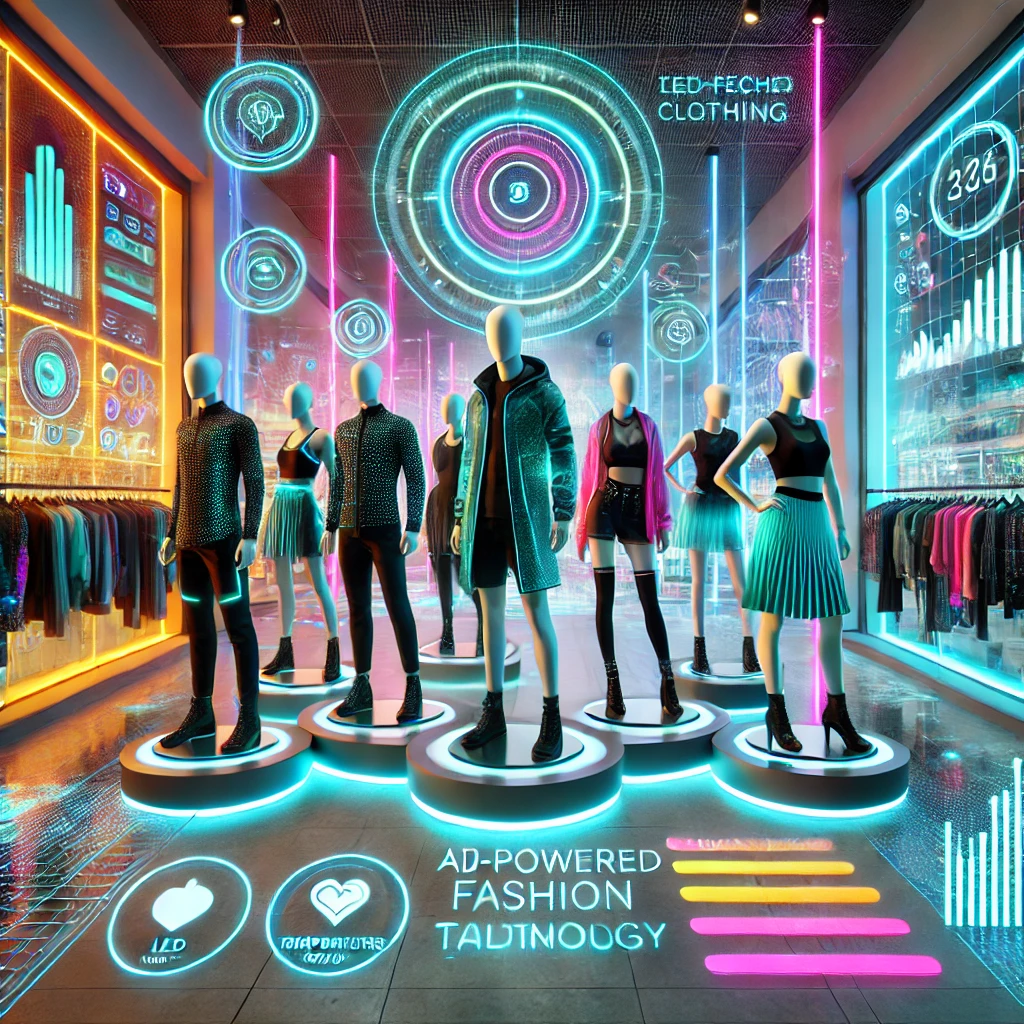Introduction
The fusion of technology and fashion is revolutionizing the way we dress, creating garments that are not only stylish but also functional and intelligent. Tech-infused apparel, which includes smart fabrics, wearable technology, and clothing with embedded AI features, is transforming industries ranging from fitness and healthcare to entertainment and everyday wear. This article explores the rise of smart clothing, its applications, and the impact it has on our daily lives.
The Evolution of Smart Fabrics
Smart fabrics, also known as e-textiles, are textiles that integrate electronic components to enhance functionality. These fabrics have evolved significantly, incorporating conductive threads, flexible sensors, and even self-healing materials. The development of these fabrics has paved the way for a new era of interactive and responsive clothing.
1. Conductive and Responsive Materials
Modern smart fabrics use conductive fibers that allow electrical signals to pass through them. These materials enable clothing to monitor biometric data, control electronic devices, and interact with the surrounding environment.
2. Temperature-Regulating Textiles
Thermoregulating fabrics adjust their insulation properties based on body temperature or external conditions. For example, clothing made with phase-change materials (PCMs) can absorb, store, and release heat as needed, ensuring comfort in varying temperatures.
3. Self-Cleaning and Adaptive Textiles
Self-cleaning fabrics use nanotechnology to repel dirt and moisture, making them highly durable and easy to maintain. Additionally, some adaptive textiles can change color or texture based on environmental factors, allowing for customizable fashion.
Wearable Technology: Beyond Smartwatches
Wearable technology has moved far beyond fitness trackers and smartwatches, integrating seamlessly into everyday clothing to provide real-time feedback, enhance performance, and improve convenience.
1. Smart Fitness Apparel
Athletes and fitness enthusiasts are benefiting from smart apparel that tracks movement, monitors heart rate, and analyzes muscle activity. Brands like Under Armour and Sensoria have introduced smart clothing that provides data-driven insights to optimize workouts and prevent injuries.
2. Health-Monitoring Wearables
Healthcare professionals are leveraging smart clothing to track vital signs such as heart rate, respiration, and hydration levels. These garments can provide early detection of health conditions, making them invaluable for patients with chronic illnesses.
3. Interactive and Entertainment-Driven Wearables
Fashion meets technology in entertainment-focused wearable tech. LED-embedded clothing, sound-responsive outfits, and gesture-controlled fabrics are being used in concerts, performances, and gaming, enhancing the immersive experience for users.
AI-Embedded Clothing: The Next Step in Fashion Technology
Artificial intelligence (AI) is pushing the boundaries of tech-infused apparel by enabling clothing to learn, adapt, and personalize experiences for users.
1. AI-Powered Personalization
AI-driven clothing can analyze wearer preferences and adjust features accordingly. For example, AI-enabled jackets can adapt insulation levels based on user activity and surrounding temperature.
2. Voice-Activated and Gesture-Controlled Apparel
Advancements in AI are leading to the development of garments that can respond to voice commands or gestures. Imagine a jacket that tightens its fit when you give a voice command or a pair of shoes that adjust their cushioning based on walking patterns.
3. Emotion-Detecting and Mood-Responsive Clothing
AI-integrated apparel is also exploring the realm of emotion detection. Some garments can assess a wearer’s emotional state through biometric sensors and change colors or patterns to reflect their mood, offering a new dimension to self-expression.
The Impact of Tech-Infused Apparel on Everyday Life
The integration of smart fabrics, wearable technology, and AI in clothing is reshaping various industries and improving daily experiences.
1. Sustainable and Eco-Friendly Innovations
Tech-infused apparel is driving sustainability by incorporating eco-friendly materials and energy-efficient features. Some smart textiles are designed to biodegrade, reducing fashion waste, while others harness solar energy to power embedded electronics.
2. Enhanced Safety and Security
Smart clothing can play a crucial role in safety and security. Fire-resistant and bulletproof smart fabrics are being used in military and emergency response uniforms, while GPS-enabled wearables enhance personal safety by providing real-time location tracking.
3. Convenience and Connectivity
From jackets with built-in heating elements to jeans that can charge smartphones, tech-infused apparel is making everyday life more convenient. These innovations are blending seamlessly into modern lifestyles, reducing the need for additional gadgets.
Challenges and Future Prospects
Despite its many advantages, tech-infused apparel faces challenges such as high production costs, durability concerns, and privacy issues related to data collection. However, continuous advancements in materials science, AI, and miniaturization are paving the way for widespread adoption.
1. Overcoming Durability and Maintenance Issues
Ensuring that smart clothing remains durable and washable without compromising functionality is a key challenge. Researchers are developing water-resistant sensors and flexible circuits to improve longevity.
2. Addressing Privacy and Data Security Concerns
With clothing collecting sensitive biometric data, privacy and security concerns must be addressed. Implementing robust encryption methods and user-controlled data access will be essential for consumer trust.
3. Expanding Accessibility and Affordability
Currently, many smart garments are priced at a premium. As technology advances and production costs decrease, tech-infused apparel is expected to become more accessible to a broader audience.
Conclusion
Tech-infused apparel is revolutionizing the fashion industry, offering a perfect blend of style, functionality, and intelligence. From smart fabrics and wearable tech to AI-powered clothing, the future of fashion is becoming increasingly interactive and personalized. As these innovations continue to evolve, they promise to enhance comfort, performance, and everyday convenience, making fashion more than just an expression of style—it’s becoming a seamlessly integrated part of our digital lives.
Courtesy: Internet
Read Also:
Digital fashion and the metaverse









+ There are no comments
Add yours